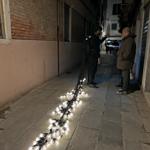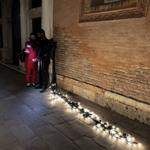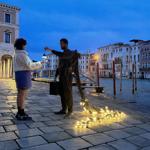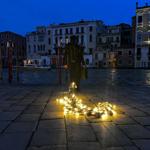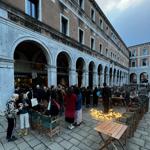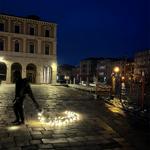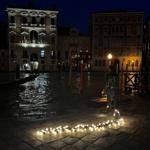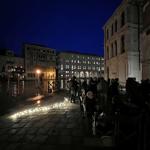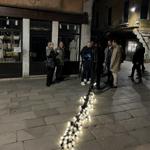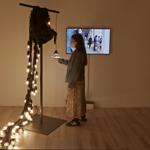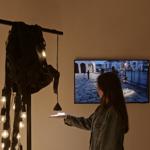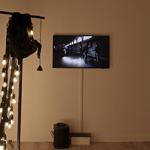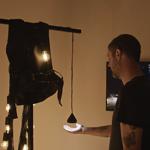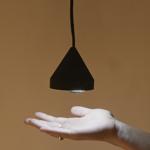Pulse Agglomerate
"Pulse Agglomerate," a biometric performance, was presented during the 60th Venice Biennale (2024). The piece consisted of a wearable armature that powered, controlled, and hauled hundreds of lightbulbs, each glimmering to the pulse of a different participant from the past. The performer wearing the piece walked around the streets of Venice, collecting one hundred heartbeats.
The heartbeats used at the beginning of the performance were recordings from the 2013 Pulse Room installation in the IZOLYATSIA Foundation in Donetsk, Ukraine, which took place shortly before armed representatives of the Russian Federation seized the territory. The non-profit, non-governmental art foundation was forced to move to Kyiv and the original exhibition site was occupied and destroyed.
During "Pulse Agglomerate," people could use an onboard pulse sensor to add their heartbeat to the group of recordings, with the newest recording replacing the oldest. In this way, the piece was a mournful gesture in the face of ongoing war and a symbol of continuity and resilience.
The project pays homage to several precedents in the history of art. In 1956, Japanese Gutai artist Atsuko Tanaka wore The Electric Dress, composed solely of lightbulbs of all shapes and sizes. In 1960, Mexican director Roberto Gavaldón released the film Macario: in one scene, suffering from hallucinations caused by hunger, the protagonist sees all people represented by flickering candles in a cave. In 1972, Canadian-born, California-based artist Jack Goldstein, buried himself alive—with a stethoscope attached to his chest, he breathed air from plastic tubes while a red light above ground flashed to the rhythm of his beating heart.
The heartbeats used at the beginning of the performance were recordings from the 2013 Pulse Room installation in the IZOLYATSIA Foundation in Donetsk, Ukraine, which took place shortly before armed representatives of the Russian Federation seized the territory. The non-profit, non-governmental art foundation was forced to move to Kyiv and the original exhibition site was occupied and destroyed.
During "Pulse Agglomerate," people could use an onboard pulse sensor to add their heartbeat to the group of recordings, with the newest recording replacing the oldest. In this way, the piece was a mournful gesture in the face of ongoing war and a symbol of continuity and resilience.
The project pays homage to several precedents in the history of art. In 1956, Japanese Gutai artist Atsuko Tanaka wore The Electric Dress, composed solely of lightbulbs of all shapes and sizes. In 1960, Mexican director Roberto Gavaldón released the film Macario: in one scene, suffering from hallucinations caused by hunger, the protagonist sees all people represented by flickering candles in a cave. In 1972, Canadian-born, California-based artist Jack Goldstein, buried himself alive—with a stethoscope attached to his chest, he breathed air from plastic tubes while a red light above ground flashed to the rhythm of his beating heart.
General info
Spanish name:
Aglomeración de Corazonadas
Year of creation:
2024
1: Donetsk - Venice
Technique:
LED light bulbs, LED light dimmers, contactless heartbeat sensors, audio playback, computer
Additional info:
Performed by Gregorio Magnifici. Collected one hundred heartbeats from Venice.
Keywords:
Exhibitions
- ZONAMACO, Galería Max Estrella, ZONAMACO Art Fair, Mexico City, México, 2026.
- Pulse Agglomerate, Atelier Lozano-Hemmer, Venice, Italy, 2024.
Credits
- Performer: Gregorio Magnifichi
- Production Assistance: Karine Charbonneau, Gabriel Rizzotti, Leigh Kotsilidis, Gastón Ramirez
- Programming and Hardware: Stephan Schulz
- Programming Assistance: Lauria Clarke, Emily Green, William Sutton
Bibliography
- United24. "A performance dedicated to Donetsk took place in Venice." LinkedIn, 23 Apr. 2024. 2024. (english) (Social Media)
